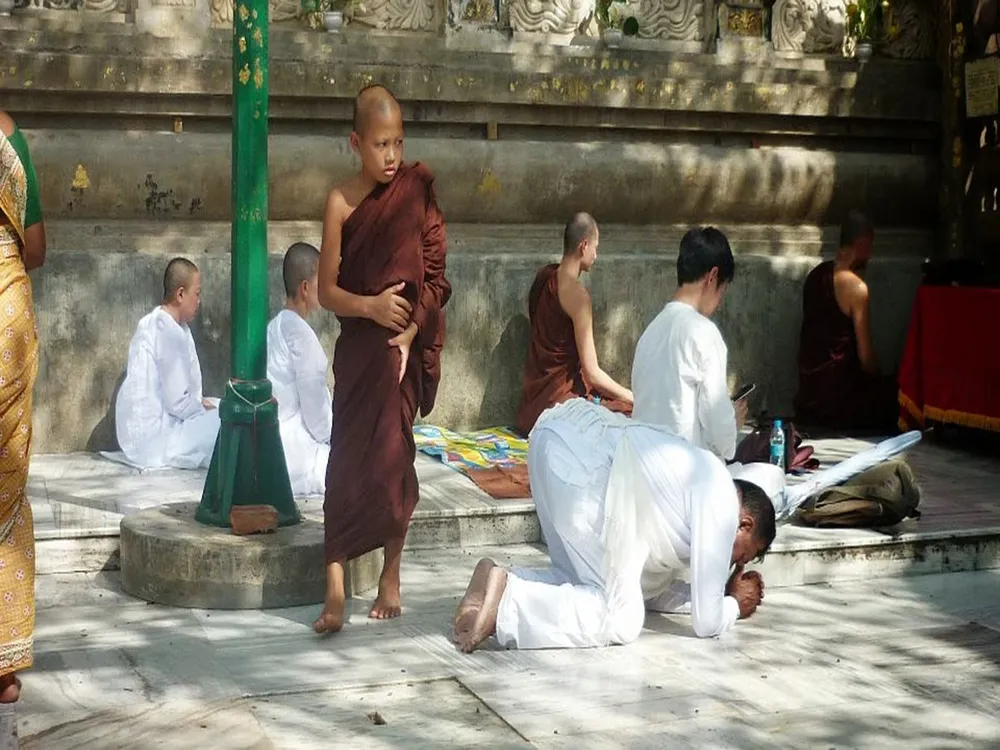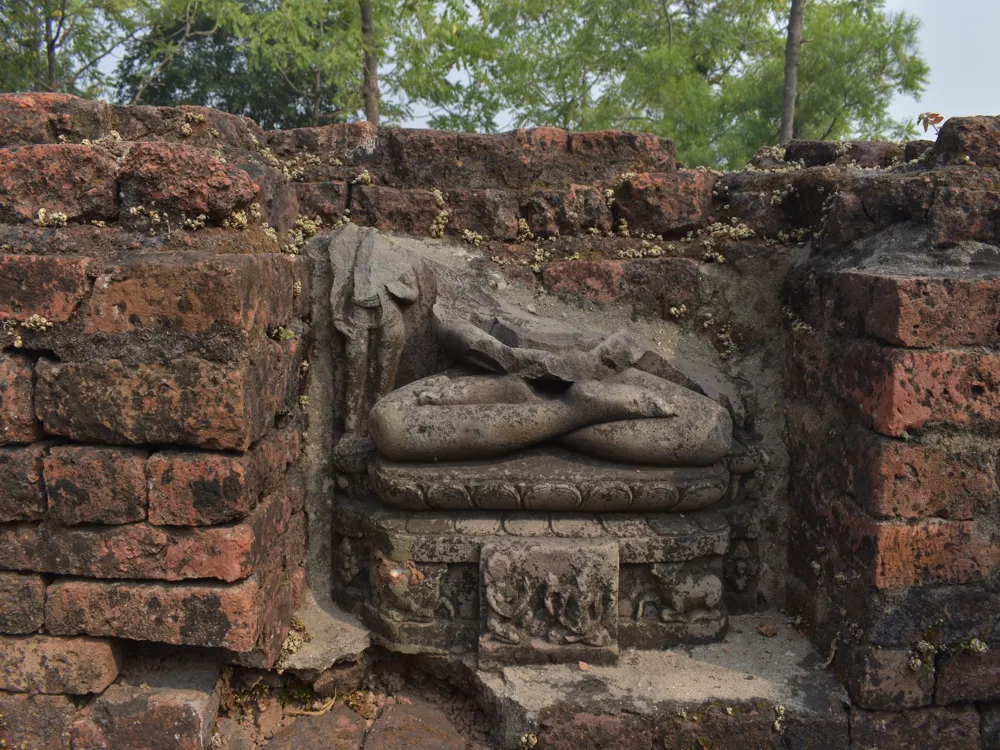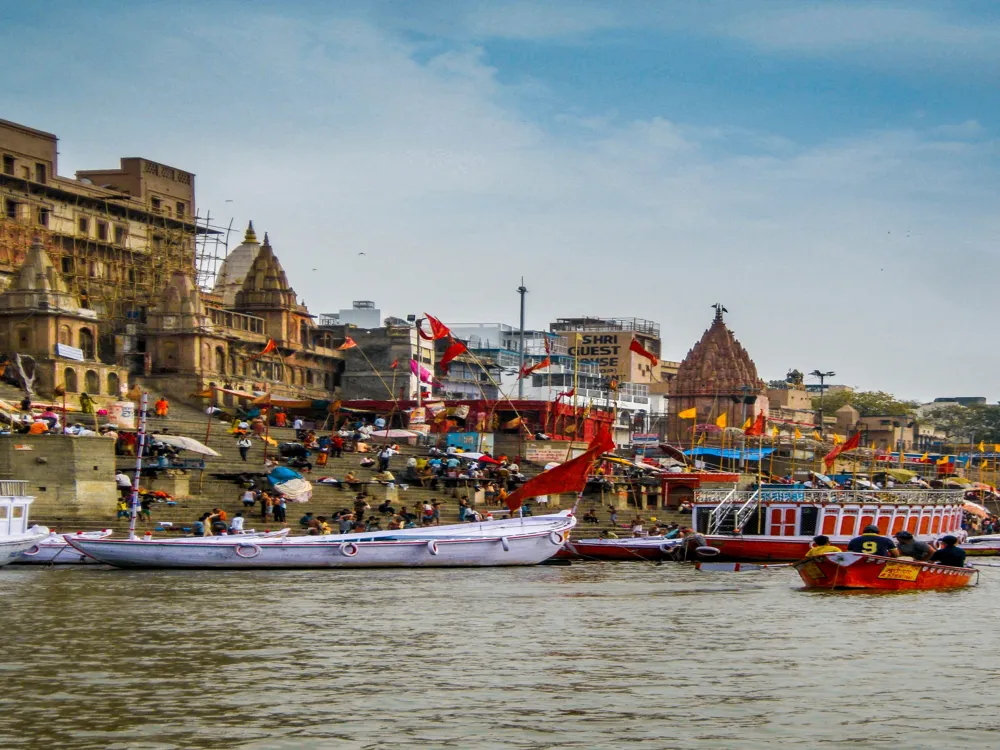The Great Stupa of Nalanda, located in the northeastern Indian state of Bihar, stands as a magnificent symbol of ancient Buddhist architecture and spirituality. Founded during the Gupta period in the 5th century, the stupa forms part of the larger Nalanda University complex, one of the first great universities in recorded history. This historical marvel has attracted scholars and pilgrims from around the world for centuries, thanks to its unique blend of spiritual significance and architectural grandeur. The Nalanda University, to which the Great Stupa belongs, was a renowned center of learning from the 5th century to the 12th century. It housed thousands of monks and students from across Asia, specializing in various fields of knowledge, including theology, philosophy, medicine, and mathematics. The stupa itself, an iconic symbol of Buddhist culture, represents the enlightenment of Buddha and serves as a focal point for meditation and spiritual gatherings. Over the centuries, the stupa has witnessed numerous renovations and expansions, reflecting the changing dynasties and architectural styles of the times. Today, the Great Stupa stands not only as a monument of religious significance but also as a testament to the architectural prowess of ancient Indian civilization. Its strategic location in Bihar, a region pivotal in the life of Buddha, further adds to its spiritual and historical importance. The stupa's legacy continues to influence modern architecture and remains a source of inspiration for scholars, architects, and spiritual seekers worldwide. The architecture of the Great Stupa of Nalanda is a splendid example of the evolution of Buddhist architectural styles in India. The structure, primarily built of brick, is characterized by its grandeur and the intricacy of its design. The stupa evolved over several centuries, with each dynasty that ruled the region leaving its imprint on its architecture, resulting in a complex yet harmonious blend of styles. Originally, stupas were simple mounds containing relics of the Buddha or his followers. However, as Buddhism evolved, so did the architecture of the stupas. The Great Stupa of Nalanda showcases this evolution brilliantly. It features a large, hemispherical dome symbolizing the vault of heaven, with a precise geometric alignment that is believed to represent the Buddha's path toward enlightenment. The base of the stupa is adorned with intricate carvings and sculptures depicting scenes from the life of Buddha and various Buddhist motifs. One of the distinctive features of the Great Stupa is its series of terraces that lead up to the apex, each terrace narrower than the one below. These terraces are believed to represent the different stages of enlightenment. The stupa is also surrounded by several smaller stupas and shrines, each contributing to the grandeur and spiritual aura of the site. The use of local materials and indigenous construction techniques further highlights the ingenuity of ancient Indian architects and their ability to create structures of immense beauty and durability. Moreover, the Great Stupa's alignment with the cardinal directions, and the presence of a circumambulatory path around it, are reflective of the cosmic and spiritual symbolism inherent in Buddhist architecture. The stupa's large dome, rising majestically against the backdrop of the Bihar landscape, creates a powerful visual impact and serves as a focal point for meditation and religious ceremonies. The ideal time to visit the Great Stupa of Nalanda is between October and March. During these months, the weather in Bihar is pleasant, with cooler temperatures and minimal rainfall, making it conducive for exploring the outdoor site. Visitors are advised to dress modestly, keeping in mind the religious significance of the site. Comfortable walking shoes are recommended as the area is expansive and involves a lot of walking. Maintaining a respectful demeanor and silence is encouraged, especially near the meditation areas. Opting for a guided tour can greatly enhance your understanding of the stupa's historical and architectural significance. Qualified guides are available at the site, offering insights into the stupa's history, architecture, and its role in the spread of Buddhism. Photography is generally allowed, but it is advisable to check for specific restrictions in certain areas of the complex. Using flash photography or disturbing the serenity of the site is discouraged. The Great Stupa of Nalanda is easily accessible from various parts of India. The nearest airport is Patna Airport, located about 90 kilometers away. From Patna, visitors can hire taxis or take buses to reach Nalanda. The nearest railway station is Nalanda Railway Station, which is well-connected to major cities in India. For those preferring road travel, Nalanda is well-connected by road to major cities in Bihar and neighboring states. Local transportation options like taxis, buses, and auto-rickshaws are readily available for the final leg of the journey to the stupa. Read More:Overview of The Great Stupa of Nalanda, Bihar
Architecture of The Great Stupa
Tips When Visiting The Great Stupa
Best Time to Visit
Dress Code and Conduct
Guided Tours
Photography
How To Reach The Great Stupa
The Great Stupa
Nalanda
Bihar
NaN onwards
View nalanda Packages
Nalanda Travel Packages
View All Packages For Nalanda
Top Hotel Collections for Nalanda

Private Pool

Luxury Hotels

5-Star Hotels

Pet Friendly
Top Hotels Near Nalanda
Other Top Ranking Places In Nalanda
View All Places To Visit In nalanda
View nalanda Packages
Nalanda Travel Packages
View All Packages For Nalanda
Top Hotel Collections for Nalanda

Private Pool

Luxury Hotels

5-Star Hotels

Pet Friendly





















